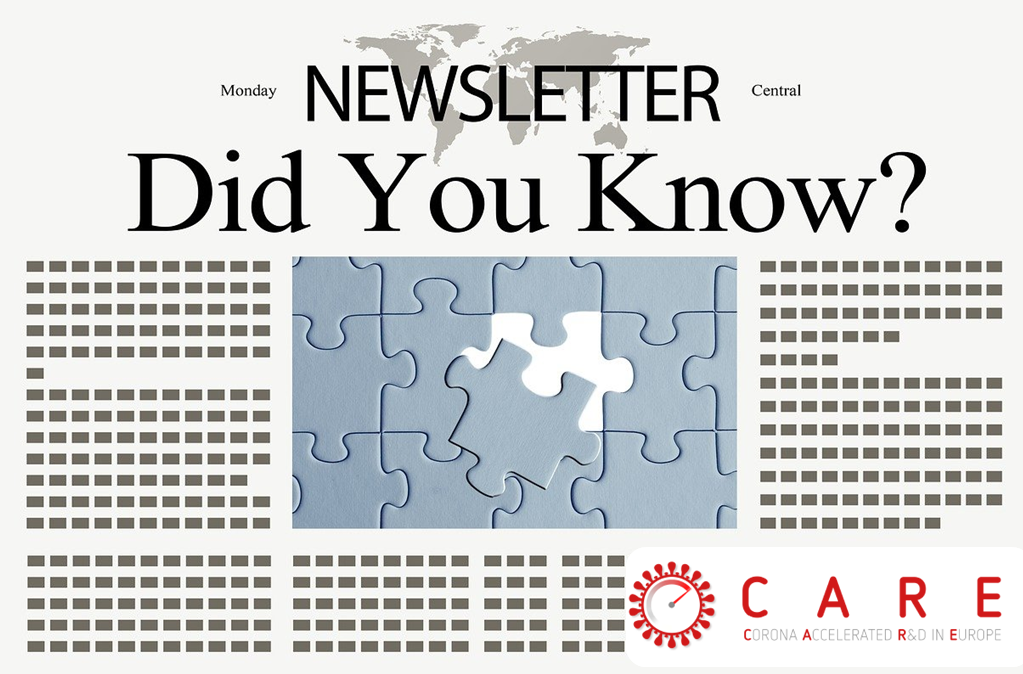What experience did you have working on a Public Private Partnership before joining CARE?
I had no experience of a public private partnership before joining CARE. As a PhD student, I am early in my career journey. I have experience in academia and experience working in public organisations, but I have no prior involvement with industry partners.
Doing my PhD research as part of the CARE consortium has been a really unique opportunity to get exposure to the industry perspective and understand public and private perspectives better, and how to combine these perspectives, in the context of this collaboration.
Tell us about the work you have been doing in the CARE consortium
My role in the CARE consortium involves building a system dynamics model of the health system surrounding the antiviral drug development in the CARE consortium.
I’m a PhD candidate in the Access-To-Medicines Research Centre at KU Leuven, Belgium, and we’re based in the faculty of business and economics. Our research team uses systems thinking to construct and analyse health systems with a human-centered focus, utilising a transdisciplinary approach.
My research aims to quantify and understand the impact of what’s being done in the CARE consortium by using systems thinking and system dynamics modelling methods.
We start with qualitative inputs. We use model building workshops and interviews to understand the mental models of all relevant stakeholders. We build a conceptual model based on the shared mental models of all stakeholders. We hold model validation interviews and workshops to confirm that the models, built from these initial inputs, correctly represent the reality. Once the interconnections and variables of the model are validated by all stakeholders, we can quantify the model. The quantified model can then be used to simulate, analyse and compare different scenarios.
What is System Dynamics? Click here to find out more
What highlights can you share from your time in the CARE consortium so far?
The care annual meetings have been great opportunities to connect and come together with the many members of this huge consortium and discuss our research. These opportunities to come together in person to share ideas have been really beneficial for our research.
Most of the data collection for our model is via online workshops and interviews. These are already very interesting and useful opportunities to understand the research being done by all the different partners in the consortium. All of the partners we interview are willing to share such interesting and valuable insights already, but the annual meetings, where we have been able to connect in person, has contributed to an extra level of understanding.
Why does this work matter?
This work matters because understanding what’s working well and being able to quantify what could be done differently or better is extremely valuable for designing future consortia or drug development initiatives.
The quantitative system dynamics model can be used to show what’s currently working well in the CARE consortium and can be used to simulate different scenarios to show counterfactuals of how the consortium could have been organised differently.
This can be used for optimising the functioning of the current consortium and the organisation of future consortia. This can promote better pandemic preparedness, since it can help to design new consortia faster and more efficiently in response to future pandemics or epidemics. This work can also be leveraged to inform more efficient and fast drug development generally, to overall improve patient outcomes.
What are or were the biggest challenges you have experienced (and how did you overcome them?)
The biggest challenge I’ve encountered in this research is tackling the extremely broad scope of the research and model. The consortium is a huge collaboration of almost 40 different public-private partners. There are so many different things being done in this consortium, so measuring, understanding, and modelling all of it has been very challenging.
Understanding this system is challenging and complex, but luckily, many CARE partners are willing to make time to participate in our interviews, share their learnings and insights and explain very clearly the core aspects of their roles in the consortium. This cooperation and willingness to collaborate, makes our research so much more feasible and relevant.
Currently, a big challenge that we’re working through is trying to quantify the more behavioural variables relating to consortium design, such as willingness to collaborate, trust, perceived success etc.. The method we use, system dynamics, is a tool that allows/facilitates the quantification of soft variables like these, so this gives a really good starting point. Currently it’s a learning process of applying these methods to the context of the consortium, but we know we can count on the CARE partners to engage in future workshops to help validate and strengthen our findings.
How have you benefited from your involvement in CARE?
I have benefited greatly by having access to such expertise and so many industry experts. The diversity of partners and the huge range of capabilities within the consortium provides a perfect pool of stakeholders to use as inputs in a system dynamics model.
Not only are there many skilled partners in the consortium, but the high willingness of partners to engage in our research and share their knowledge has been extremely beneficial.
Both the expertise in the consortium and the willingness of these experts to collaborate have been invaluable in helping me understand the health system of antiviral drug development and has helped me to improve my skills in system dynamics modelling.



